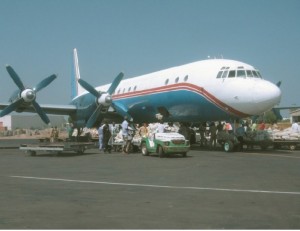https://files.acrobat.com/a/preview/673561c2-ee1d-4a61-9578-ace4270dbf5e
السلام عليكم ورحمة الله وبركاته This Blog is Dedicated to the Preservation of Peace, Dignity, and Human Rights and the Dissemination of Knowledge.
Sunday, April 17, 2016
Sunday, April 3, 2016
AN INTERVIEW WITH KENYAN-SOMALI PROFESSIONAL PILOT AND RETIRED ARMY MAJOR MOHAMUD AHMED ISMAIL
By WardheerNews
Editor’s Note: WardheerNews brings to its readers an in-depth interview with Mohamud Ahmed Ismail, a distinguished Kenyan-Somali professional pilot and a former retired Major of the Kenya Army. Mr. Mohamud talks about growing up in a nomadic culture in North Eastern Kenya, his professional life as a pilot and the aviation industry in East Africa. The interview was conducted for WardheerNews by Adan Makina, who is currently based in Kenya.
____________
WardheerNews (WDN): Welcome to WardheerNews Mr. Mohamud. Could you please tell our readers about your background history especially a touch on your education and professional training?

Pilot Mohamud: Thank you brother Makina and the whole fraternity of WardheerNews for having me. It’s a pleasure and a privilege I cannot fathom! I was born in the northern outskirts of Garissa, near the small town called Sakha to a Somali camel herdsmen way back in the early sixties when Kenya was almost attaining its independence. Three months later my father passed away, May Allah (Subxaanahu Wa Tacaalaa) admit him to Jannah, Aammiin.
I passed through the rigmarous of an orphan in that environmental settings. My mother got married to one of my distant uncles and we had to move to Bura, where people rare cows and are more riverine. By the age of four, I was looking after goats and cows of course, with the tutelage of senior boys, and occasionally girls. By the stroke of fate, I developed some complications on my right leg and it almost became gangrenous. My relatives thought that I was of no use and they brought me to Bura town to join my mum as they presumed me beyond economic value. I got treated in the most painful ways. They pierced five spots of my tight femur with a red hot iron rod. The pains were excruciating and lots of pus and blood oozed out. A few weeks down the line, I was up and able to walk.
I was taken to a local Dugsi or Islamic religious school but I ran away after less than a year as I couldn’t sustain the memorization and the constant beatings. My mother took me to the local primary school lest my elder relatives return me to herding. I joined Garissa High School and later I was taken to do Physiotherapy at a Nairobi College. I was moved by the massacres and the harrowing experiences of the women and children of the infamous 1980 Garissa Gubaay or the burning of Garissa. Immediately, I joined the Kenya Armed Forces in 1981 who were then the alleged culprits of murder and mayhem in Garissa.
WDN: What attracted you to the aviation industry and how did you become a pilot in the first place?
Pilot Mohamud: Well, as was the joining of the Armed Forces, I became a pilot by the stroke of fate. In one of the days of career choices, I thought I should try and do the Pilots’ Aptitude Test to avoid doing some heavy physical work. By then, I had never been close to any aircraft. The test was tough and the time given unbelievably was short. Amazingly, I did well and after being Commissioned as a Second Lieutenant, by the then President Daniel Arab Moi, I was among the fortunate ones who were shipped to Nairobi as Flight Cadets.
Pilot Mohamud: I have flown various types of Aircrafts. Both Fixed Wing and Rotorcrafts or Helicopters are in my licenses. I have flown a total of over 12,000 hours in both categories.
WDN: In Kenya, Somalis have been leading other ethnic groups in aircraft ownership. What gives Kenya-Somalis leverage over ethnic groups in terms of aircraft ownership?
Pilot Mohamud: The breakdown of the Siad Barre Government has been the harbinger of glad tidings for the Somali Aviation businesses. Due to the lack of good road, rail and sea transport, Aviation transport became the only viable option. The inter-clan wars, the sprawling up of self-styled militias, mercenaries, pirates and gun-totting, ramshackle armed groups whose source of income was to kill, maim and forcefully abduct any vehicle, ship and their valuable cargo has given rise to aviation as the sole transport option. International aid groups and the UN has also been moving their aid cargo by air. Only Somali-owned or competent related entities got entry into the Kenyan aviation arena and the end result was a safe haven and an enhanced aviation industry. So is the sprawling Kenyan Registered aircraft owned mainly by Kenyan-Somalis or anyone else who satisfied the Kenyan Regulatory Authority as to their ability to run a safe and a reliable air industry.
WDN: Everyday, tons of the mind-altering drug known to Somalis as Qaad is delivered to various destinations inside Somalia either by speeding Toyota Land Cruisers nicknamed ‘kabeyr’ or by ramshackle jets assembled in the former Soviet Union. Have you ever flown aircraft that deliver Miraa to Somalia that you would consider unfit to fly or outrageously dangerous to operate?
Pilot Mohamud: Dozens of aircrafts fly to Somalia carrying these cargo. However, no Soviet made aircraft has been registered in Kenya to ferry Miraa. It’s a lie and a misnomer. The carriers have always been American, Canadian and to a lesser extent, European manufactured aircrafts. The Cessna, the Beechcraft, De Havilland, the Hawker Siddeley, and the Fokker are the main aircrafts on these routes.
WDN: Are there dangers that discourage pilots from flying into Somali airspace? If there are perceived dangers of any sort, how can they be amended, overcome or rectified so that an airspace that conforms to international standards can be enforced for Somalia?
Pilot Mohamud: There are myriads of challenges that hamper pilots venturing into the Somali airspace. There is no reliable regulatory authority to provide air traffic control and navigation, weather, and search and rescue for Somali airspace. Airworthiness and ground handling services, just to mention a few, seem to be missing. The risk associated with flying into Somali airspace is like flying into a dead airspace with the possibility of meeting air pirates and an alien missile from a mad warlord heavy on a mind-altering substance.
WardheerNews
Email: admin@wardheernews.com
Email: admin@wardheernews.com
Subscribe to:
Posts (Atom)
Somalia's Beauty of the Past
Somalia is a Horn of Africa nation bordering Ethiopia, Djibouti, Kenya and the Red Sea and the Indian Ocean and endowed with assortments o...
-
Nin Insi ahaa ayaa wuxuu qabay labo haween ah oo mid ay aheyd Insi, ta kalena, Jinni. Haweeneeyda Inisiga ah waxay u dhashay saddex wiil, ...
-
Qaad or Chat (pronounced cot), scientifically known as catha Edulis, is an evergreen perennial plant popular in East Africa and some parts...
-
The characteristics of a modern organization are multi-faceted and multi-tasked. Having strong and clearly expressed values for any organiza...



